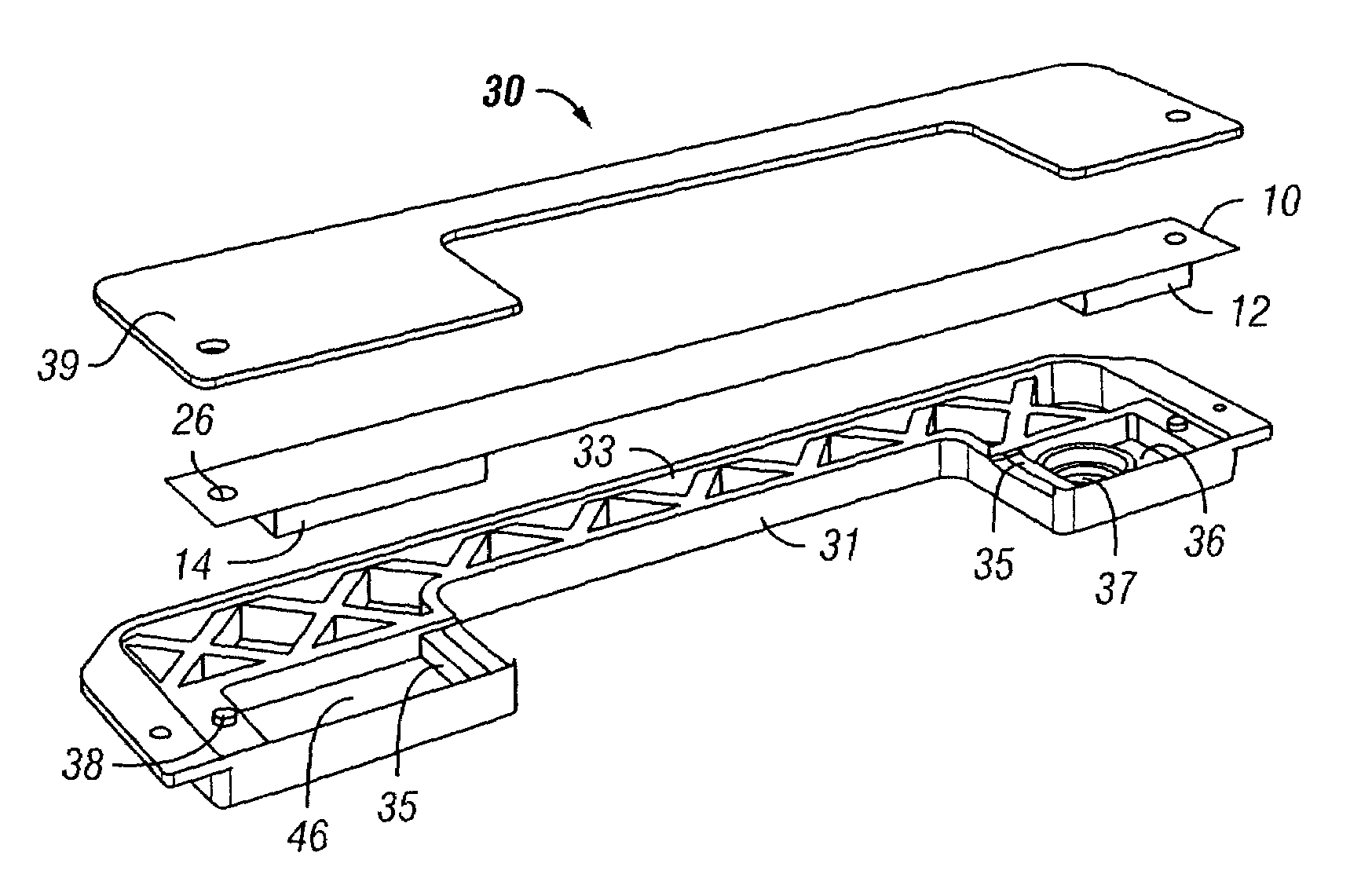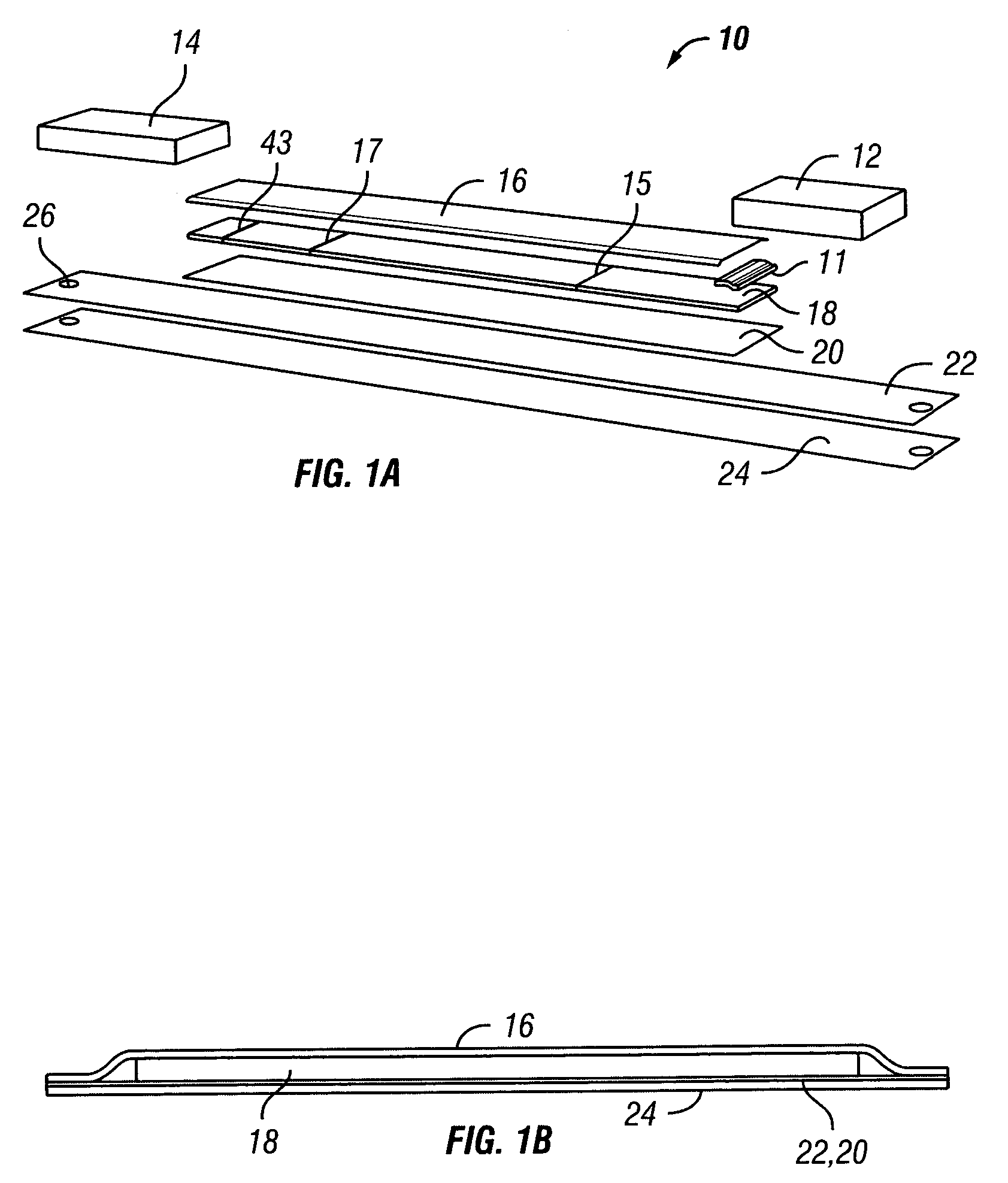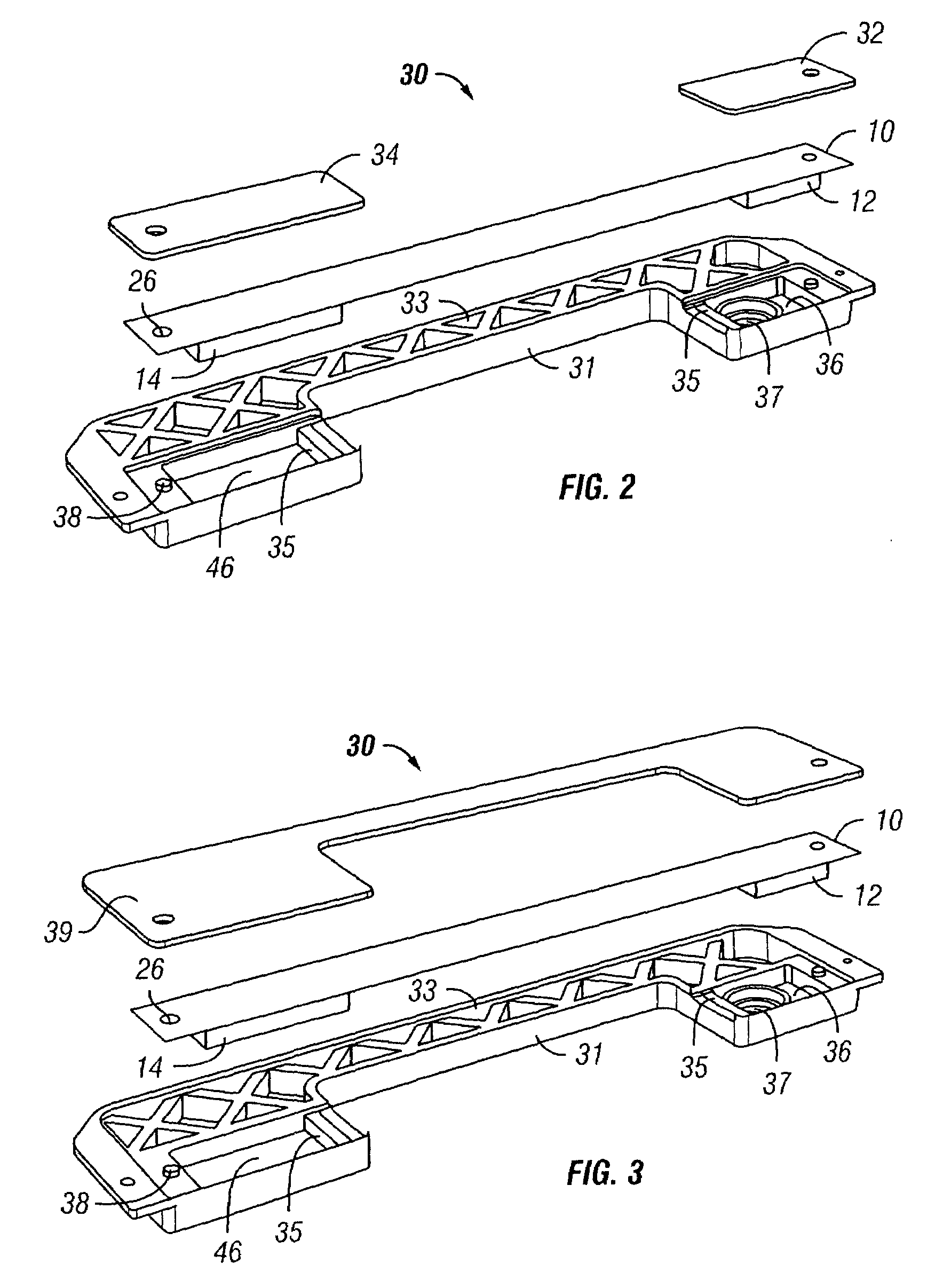Accessible assay and method of use
a technology of assay and assay method, applied in the field of assays, can solve the problems of difficult to read wet chromatographic medium, difficult to read test results, and impede the detection of labeling reagents
- Summary
- Abstract
- Description
- Claims
- Application Information
AI Technical Summary
Benefits of technology
Problems solved by technology
Method used
Image
Examples
Embodiment Construction
[0037]A particular advantage of the invention is the greatly improved sensitivity of the device over known lateral flow techniques. It also provides a very rapid measurement of the analytical region in the test strip. In addition, by providing the detector with access to the test strip from the side of the strip, rather than from the end of the strip, the gap between the detector elements can be relatively small. This is because the space between the detector elements does not have to be large enough to accommodate the relatively thick sample pad or wicking pad, which otherwise would be the case if the test strip were inserted into the detector lengthwise. Consequently, in the present invention, the electromagnet requires less power than does an end loading detector.
[0038]There are also many advantages of using magnetic particles over known colored particles or other optical indicators in the prior art. Linearity is an advantage because magnetic detection is linear with respect to t...
PUM
| Property | Measurement | Unit |
|---|---|---|
| distance | aaaaa | aaaaa |
| width | aaaaa | aaaaa |
| thick | aaaaa | aaaaa |
Abstract
Description
Claims
Application Information
 Login to View More
Login to View More - R&D
- Intellectual Property
- Life Sciences
- Materials
- Tech Scout
- Unparalleled Data Quality
- Higher Quality Content
- 60% Fewer Hallucinations
Browse by: Latest US Patents, China's latest patents, Technical Efficacy Thesaurus, Application Domain, Technology Topic, Popular Technical Reports.
© 2025 PatSnap. All rights reserved.Legal|Privacy policy|Modern Slavery Act Transparency Statement|Sitemap|About US| Contact US: help@patsnap.com



